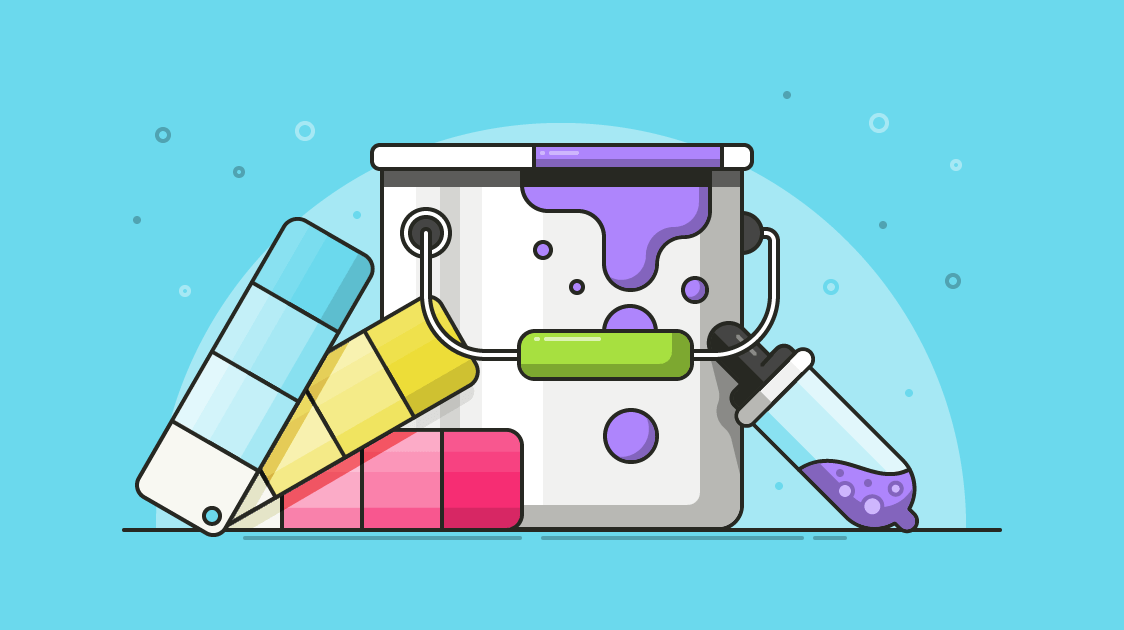Colors, people and brands form a special group. They’re deeply intertwined (as deeply as the psyche and needs of the humans).
Colors create personalised perceptions within each human being as we grow and interact with our surroundings in our own distinctive ways. Colors also, in a way, are the face of any brand (by being a part of the logo, title, etc.) for its own customers. So, Brands, whose success thrives on customer loyalty and first impressions, have to get their color choices absolutely right (and definitely, not wrong).
This trichotomy of such relationship leads to the significance of understanding the Psychology of Color in Branding.
Colors & their Meanings
In all the environments we live in, colors signify meanings and trigger distinct traits. Brands too hold distinct identities within an industry. One brand might be ambitious and aggressive while the other would be cool and comfortable. So, a brand can have a color sweet spot. Being self-aware can just help in identifying that color.
Blue: Blue represents dependability, security and trustworthiness. So, dark blues are excellent for corporate and business designs. Ex: Dell, JP Morgan, IBM
Red: There’s a reason why red is a good color for impulse buying. The color evokes strong emotions and promotes appetite. So, a great fit for fast foods. Ex: Lays, KFC, Coca-Cola
Green: Green is a calming color which also has strong annotations with growth. So, it makes a great choice for companies that pride themselves being nature-friendly. Ex: Animal Planet, Android, Subway
Grey: Grey along with the shades of white and black represent perfection, purity and luxury. Makes a great choice for any brand that relates to such. Ex: Apple, Mercedes, Puma
Colors & Brands
Brands get a chance to represent themselves in front of the customers through their logo for which color is a building block and one that can have a longstanding effect.
Brand Perception: Color increases brand recognition by up to 80% as per Kissmetrics. Even the slightest changes to the color can change the brand perception. So, the color choices should be as close to the identity of the brand as possible.
Purchases: People have strong affinities towards colors of various kinds. But the differences vary per gender, culture, etc. Doing the wrong thing can directly affect the sales of the product (ex: A violet brand logo selling male goods is a bad idea).
Memory: It has been scientifically discovered that color contrast draws attention. So, contrast helps to stand out and can help being memorable. Taco Bell chose the purple scheming, going against the usual red – yellow based fast food establishment logos.
Colors & People
While colors have a strong effect on the psyches of the people, they have a strong correlation with a few other elements of life.
Gender: Color preferences of men and women differ. They do share mutual admiration towards blue and a distinct dislike towards brown. But, purple is loved by the females while the males dislike it with a passion. Men have no attachment towards pink while the females do.
Culture: Human surroundings are deeply filled with color. But, it changes from culture to culture. For example, in the US, pink is associated with princesses, while it represents cherry blossom in Japan. The global perception of the color red is of danger while associated with prosperity in China.
Personal Experiences: A person who grew up in a happy household with orange curtains would assign the color with something good. If another person had bad experiences in a house with an orange door, his perception towards the color would be bad.
Knowing the brand for what it stands for and the significance of the colors within the diaspora of the users is a great opportunity to strike a chord with the potential customers for the brands. The awareness of psychology behind the color can potentially give you an edge and stand you out within your target audience.
Infographic on Psychology of Color in Branding


